
U.S. President Donald Trump on Monday unveiled a 20-point proposal, which was expected to be a 21-point proposal, to end the war in Gaza, positioning himself as chairman of a transitional oversight board while issuing an ultimatum to Hamas: "accept the framework or face complete destruction."
Trump announced Arab and Muslim countries would oversee Gaza's disarmament, with the United States providing full military backing to Israel if those efforts fail. The president said Israel would have his complete support to eliminate Hamas if the group rejects the proposal.
Israeli Prime Minister Benjamin Netanyahu, meeting with Trump at the White House during the announcement, warned Israel would "finish the job" if Hamas refuses the terms.
Netanyahu had not publicly endorsed the plan by the meeting's conclusion.
The proposal's third point establishes that hostilities would end immediately upon acceptance by both parties. Israeli military would withdraw to an agreed line in preparation for hostage releases, with all military operations suspended and battle lines frozen until conditions for complete Israeli withdrawal are met.
The plan envisions transforming Gaza into what Trump calls a "deradicalized terror-free zone" that poses no threat to neighboring countries while being rebuilt for the benefit of its residents.
Netanyahu had not publicly endorsed the proposal by the end of their White House meeting, leaving its fate uncertain as both sides weigh Trump's unprecedented framework for ending the conflict.

The plan's third point establishes the fundamental mechanism for ending hostilities: if both sides agree to the proposal, the war would immediately end. Israeli military would withdraw to an agreed-upon line to prepare for a hostage release.
During this time, all military operations would be suspended. The plan mentions explicitly that aerial and artillery bombardment would cease, and battle lines would remain frozen until conditions are met for the complete staged withdrawal of Israeli military.
This immediate cessation of hostilities is contingent on acceptance by both Israel and Hamas, creating a simultaneous commitment from both parties before any military stand-down occurs.
Within 72 hours of Israel's public acceptance, all hostages - both living and deceased - must be returned, according to the plan's fourth point. This represents the most time-sensitive element and would test Hamas' commitment to the framework.
The hostage crisis has remained central to the conflict since Oct. 7, 2023.
Israel would then release 250 prisoners serving life sentences plus 1,700 Gazans detained after Oct. 7, 2023, including all women and children. For every Israeli hostage's remains released, Israel would release the remains of 15 deceased Gazans. This release would include all women and children detained in that context.
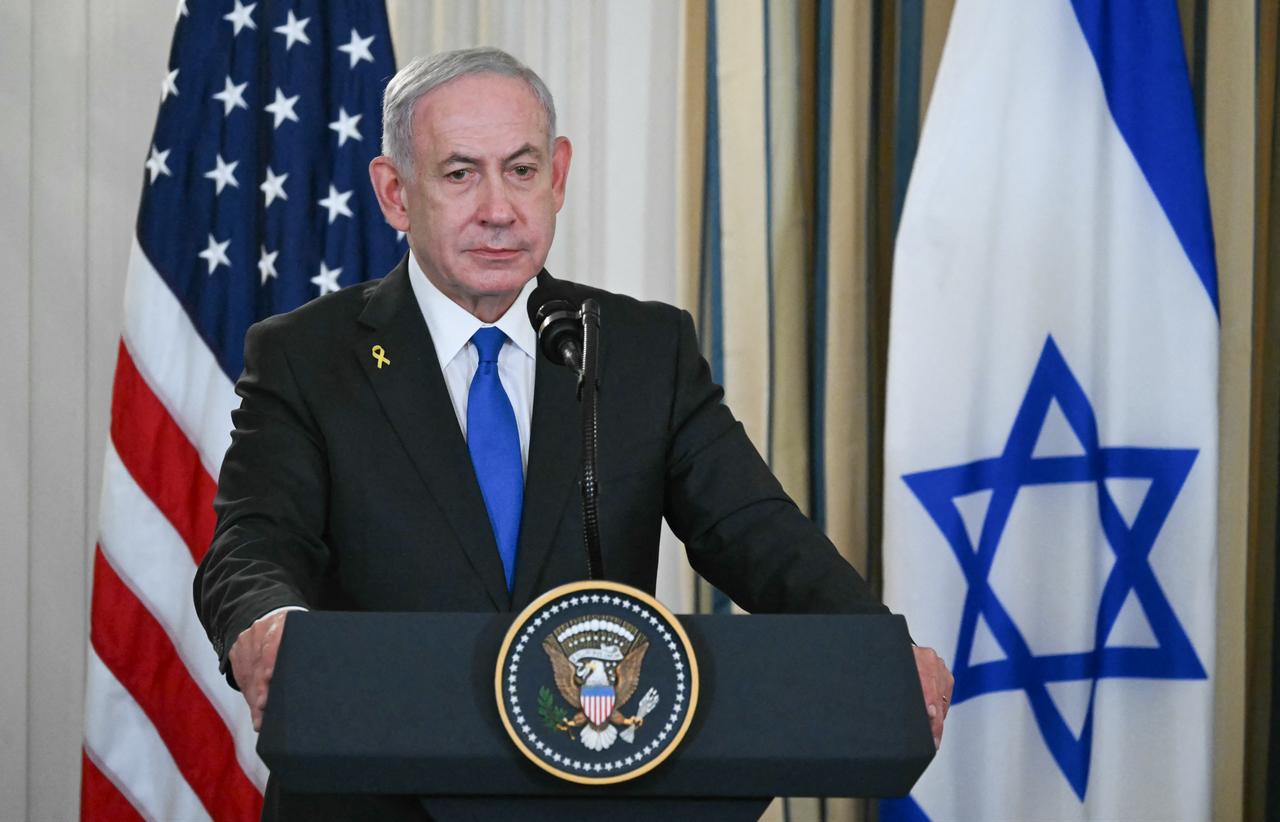
The sixth point of Trump's plan offers a controversial provision: Hamas members who commit to peaceful coexistence and to decommission their weapons would be given amnesty. This represents a significant departure from Israel's stated goal of eliminating Hamas entirely.
Members of Hamas who wish to leave Gaza would be provided safe passage to receiving countries, though the plan does not specify which countries have agreed to accept former Hamas members. This provision essentially offers Hamas fighters a choice between disarmament and exile.
Upon acceptance of the agreement, full aid would be immediately sent into the Gaza Strip, according to the seventh point. At a minimum, aid quantities would be consistent with what was included in the Jan. 19, 2025, agreement regarding humanitarian aid.
The plan specifically calls for rehabilitation of infrastructure including water, electricity and sewage systems, rehabilitation of hospitals and bakeries, and entry of necessary equipment to remove rubble and open roads. These provisions address the widespread destruction Gaza has experienced during the conflict.
The eighth point stipulates that aid distribution will proceed without interference from the two parties through the United Nations and its agencies, the Red Crescent, and other international institutions not affiliated with either party in any manner.
Opening the Rafah crossing in both directions would be subject to the exact mechanism implemented under the Jan. 19, 2025, agreement. This provision addresses one of the key bottlenecks in humanitarian access to Gaza throughout the conflict.
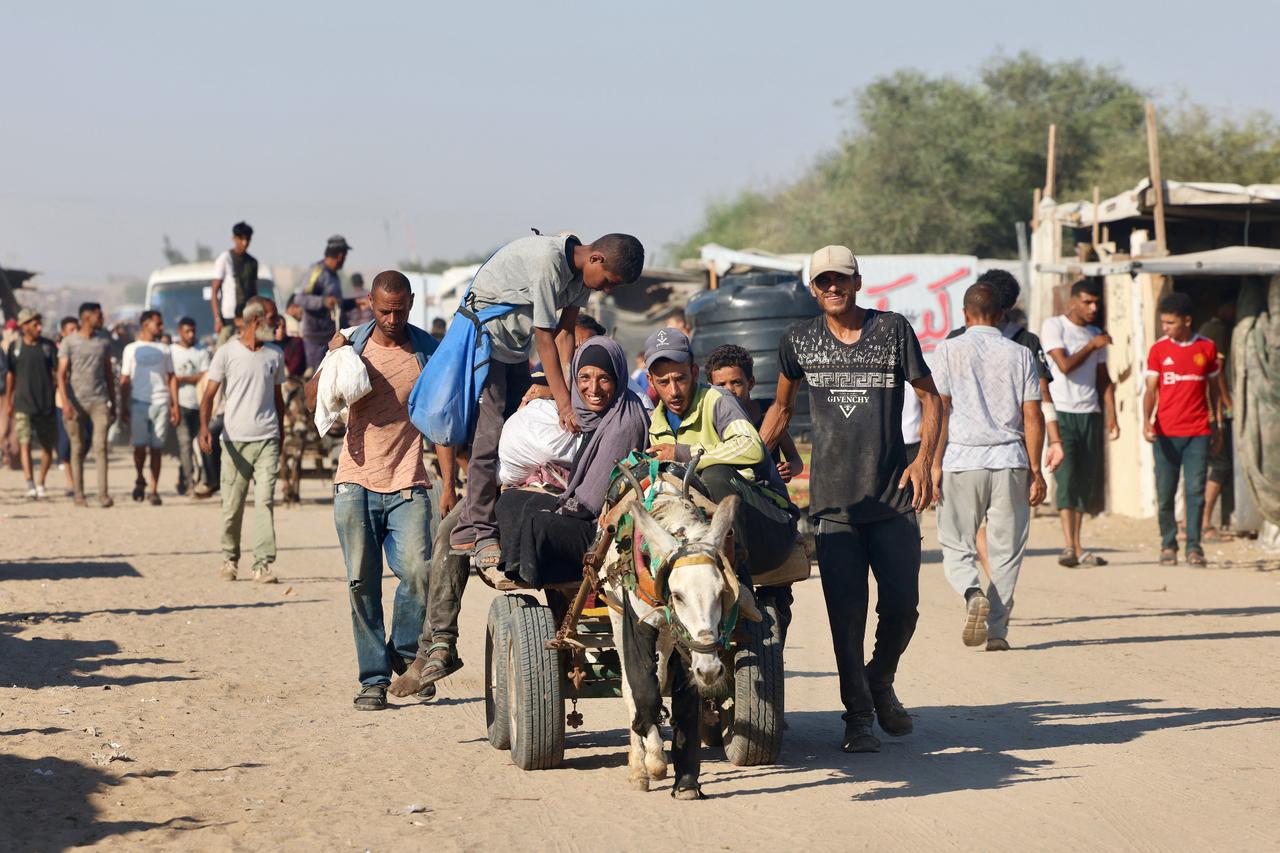
The ninth point contains perhaps the most unusual element of the plan: Gaza would be governed under temporary transitional governance of a technocratic, apolitical Palestinian committee responsible for delivering day-to-day running of public services and municipalities for the people in Gaza.
This committee would be composed of qualified Palestinians and international experts, but it would operate under the oversight and supervision of a new international transitional body called the "Board of Peace," which would be headed and chaired by Trump himself.
Other members and heads of state would be announced, though the plan names former British Prime Minister Tony Blair as one confirmed member. This body would set the framework and handle the funding for the redevelopment of Gaza until such time as the Palestinian Authority has completed its reform program.
The plan references various proposals for PA reform, including Trump's peace plan in 2020 and the Saudi-French proposal. The Board of Peace would call on best international standards to create modern and efficient governance that serves the people of Gaza and is conducive to attracting investment.
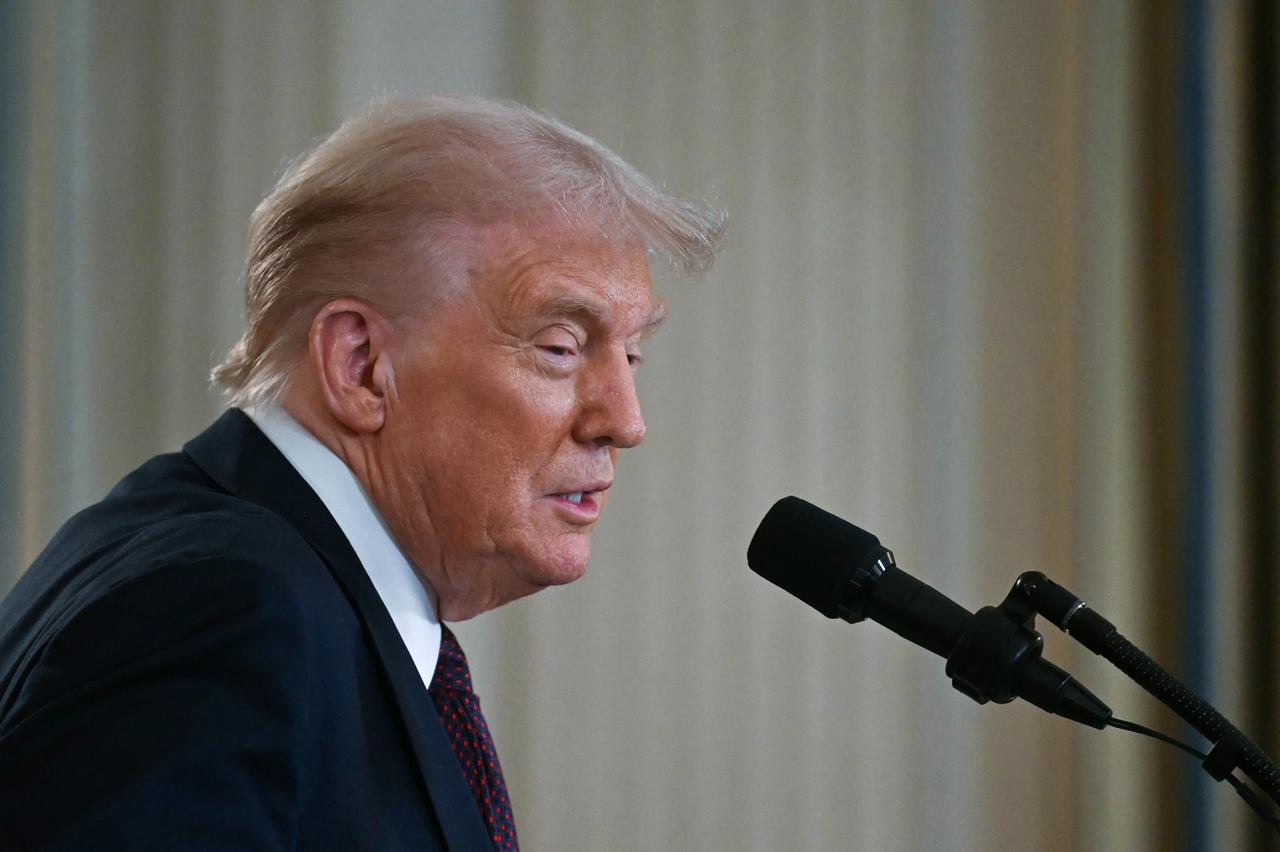
The 10th point calls for creation of a Trump economic development plan to rebuild and energize Gaza by convening a panel of experts who have helped birth some of the thriving modern miracle cities in the Middle East.
The plan acknowledges that many thoughtful investment proposals and exciting development ideas have been crafted by well-meaning international groups, and promises that these will be considered to synthesize the security and governance frameworks, thereby attracting and facilitating investments that will create jobs, opportunities, and hope for Gaza's future.
Point 11 proposes establishing a special economic zone with preferred tariff and access rates to be negotiated with participating countries. This provision suggests Gaza could receive favorable trade terms as an incentive for economic development and integration with regional economies.
The economic zone concept mirrors development strategies used in other post-conflict regions, though the plan does not specify which countries would participate or what specific benefits would be offered.
The 12th point addresses one of the most sensitive issues in the conflict: no one would be forced to leave Gaza, and those who wish to leave would be free to do so and free to return.
The plan states explicitly: "We will encourage people to stay and offer them the opportunity to build a better Gaza." This provision appears designed to counter fears and proposals that have circulated about relocating Gaza's population.
Point 13 establishes strict conditions: Hamas and other factions must agree not to have any role in the governance of Gaza — directly, indirectly, or in any form. This represents a complete removal of Hamas from any political or administrative functions in the territory.
All military, terror and offensive infrastructure, including tunnels and weapon production facilities, would be destroyed and not rebuilt. There would be a process of demilitarization of Gaza under the supervision of independent monitors.
This process would involve permanently placing weapons beyond use through an agreed-upon decommissioning process, supported by an internationally funded buyback and reintegration program, all of which would be verified by independent monitors. What the plan terms "New Gaza" would be fully committed to building a prosperous economy and to peaceful coexistence with neighbors.
The 14th point requires that regional partners provide a guarantee to ensure that Hamas and other factions comply with their obligations and that New Gaza poses no threat to its neighbors or its people.
The plan does not specify which regional partners would serve as guarantors, though Trump's announcement that Arab and Muslim countries would take charge of disarming Gaza suggests these nations would fill this role.
Point 15 outlines that the United States would work with Arab and international partners to develop a temporary International Stabilization Force to deploy in Gaza immediately. This force would train and provide support to vetted Palestinian police forces in Gaza.
The plan notes that the International Stabilization Force (ISF) would consult with Jordan and Egypt, which have extensive experience in this field. This force would serve as the long-term internal security solution for the Gaza Strip.
The ISF would work with Israel and Egypt to help secure border areas, along with newly trained Palestinian police forces. The plan emphasizes it is critical to prevent munitions from entering Gaza and to facilitate the rapid and secure flow of goods to rebuild and revitalize the territory. A deconfliction mechanism would be agreed upon by the parties to prevent accidental clashes.
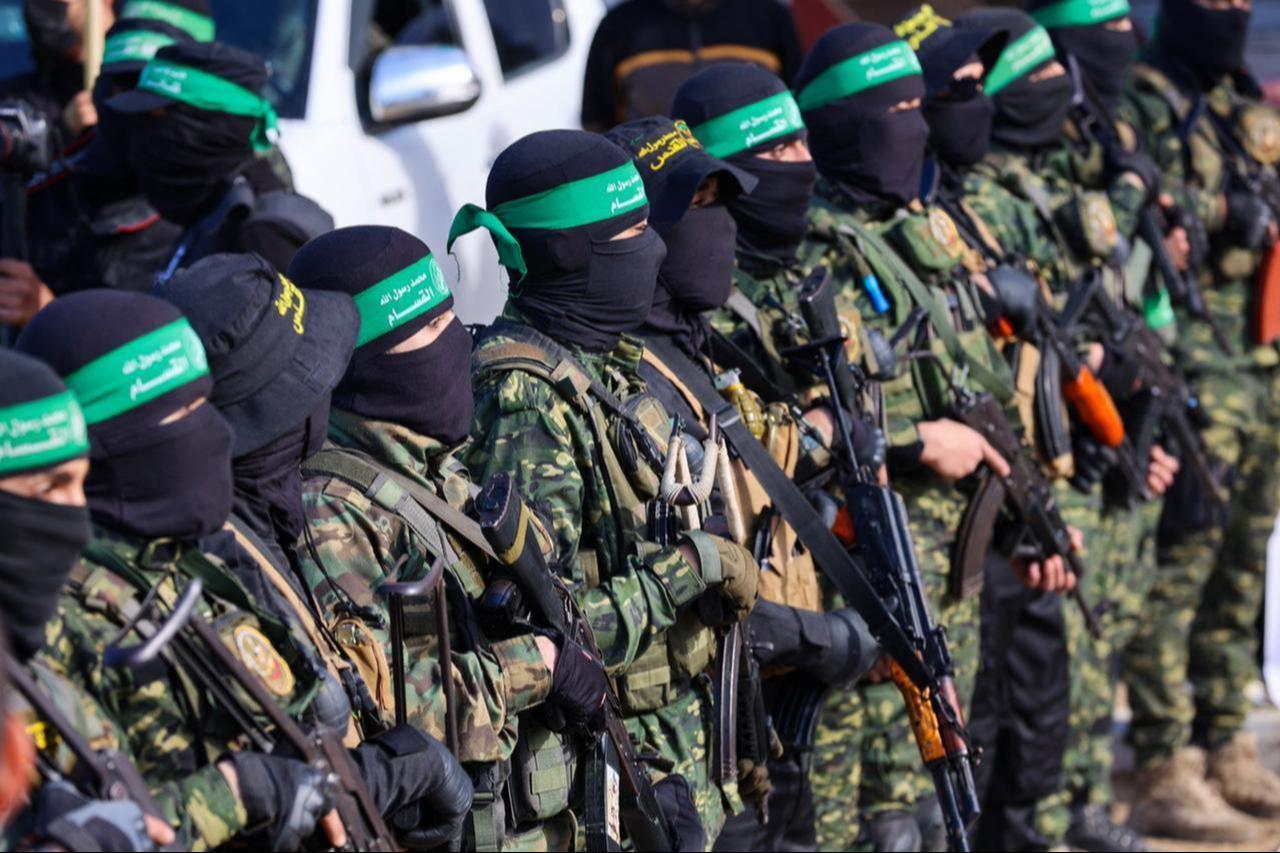
The 16th point states clearly that Israel would not occupy or annex Gaza. As the ISF establishes control and stability, the Israeli army would withdraw based on standards, milestones and timeframes linked to demilitarization.
These would be agreed upon between the Israeli army, ISF, the guarantors and the United States, with the objective of a secure Gaza that no longer poses a threat to Israel, Egypt or its citizens.
Practically, the Israeli army would progressively hand over the Gaza territory it occupies to the ISF according to an agreement they would make with the transitional authority until they are completely withdrawn from Gaza. However, a security perimeter presence would remain until Gaza is properly secure from any resurgent terror threat.
This phased withdrawal approach ties the Israeli military's departure directly to verifiable security improvements, giving Israel leverage to slow or halt the withdrawal if demilitarization stalls.
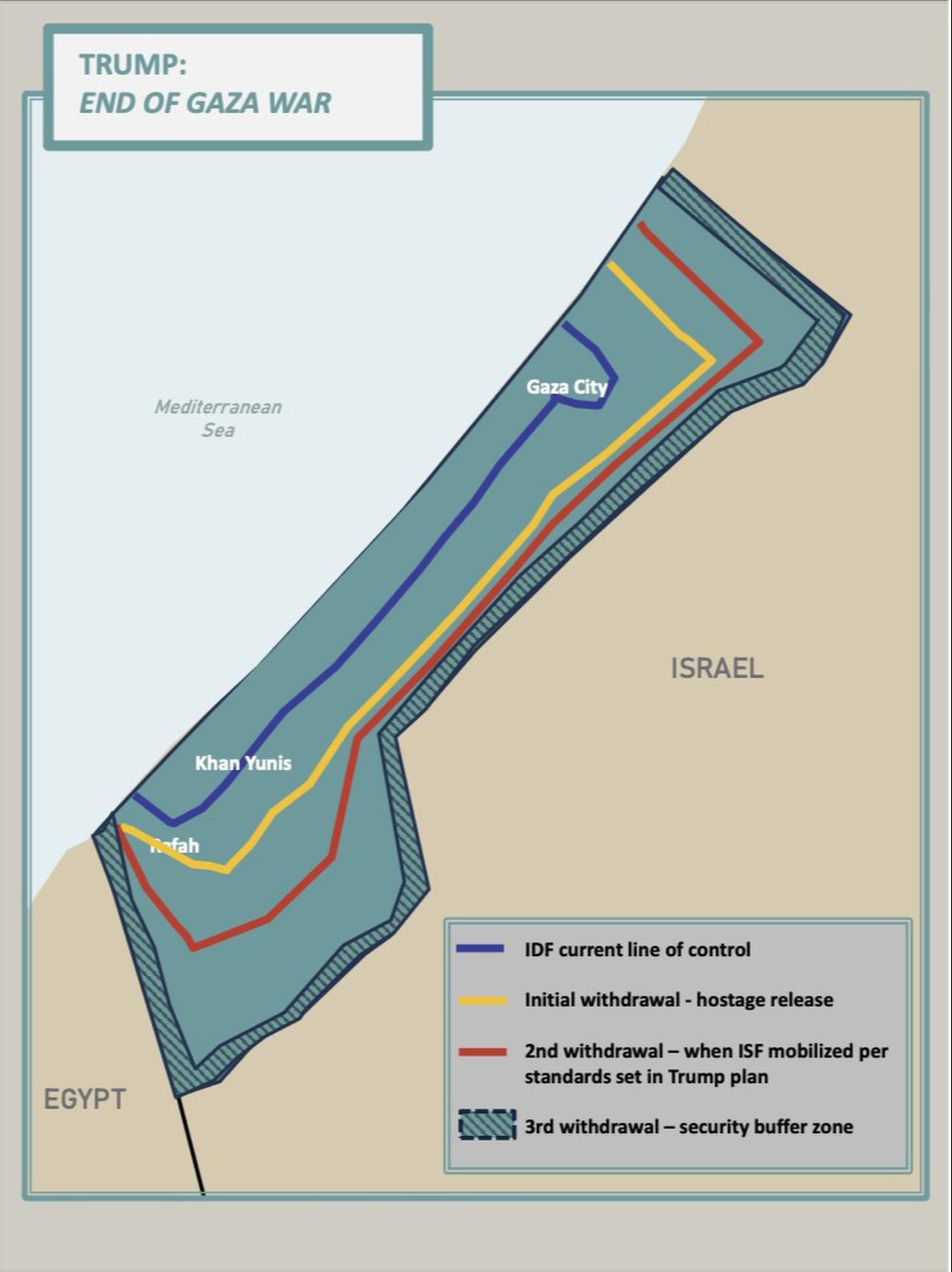
Point 17 provides a contingency: in the event Hamas delays or rejects this proposal, the above provisions — including the scaled-up aid operation — would proceed in the terror-free areas handed over from the Israeli army to the ISF.
This suggests the plan could be implemented piecemeal in areas of Gaza where Hamas no longer maintains control, potentially creating a contrast between areas that accept the framework and those that don't.
The 18th point calls for establishing an interfaith dialogue process based on the values of tolerance and peaceful coexistence. The goal would be to try to change the mindsets and narratives of Palestinians and Israelis by emphasizing the benefits that can be derived from peace.
This represents a longer-term cultural and educational component of the plan, acknowledging that security arrangements alone may not be sufficient without addressing underlying attitudes.
Point 19 addresses the broader political horizon: while Gaza redevelopment advances and when the PA reform program is faithfully carried out, the conditions may finally be in place for a credible pathway to Palestinian self-determination and statehood.
The plan explicitly states: "which we recognize as the aspiration of the Palestinian people." This acknowledgment represents a diplomatic gesture toward Palestinian political goals, though it makes statehood contingent on successful implementation of the Gaza plan and PA reforms.
The final point, number 20, commits that the United States would establish a dialogue between Israel and the Palestinians to agree on a political horizon for peaceful and prosperous coexistence.
This provision leaves open the nature and scope of future negotiations, suggesting that the Gaza plan is viewed as a first step toward a broader resolution of the Israeli-Palestinian conflict, rather than a final settlement.